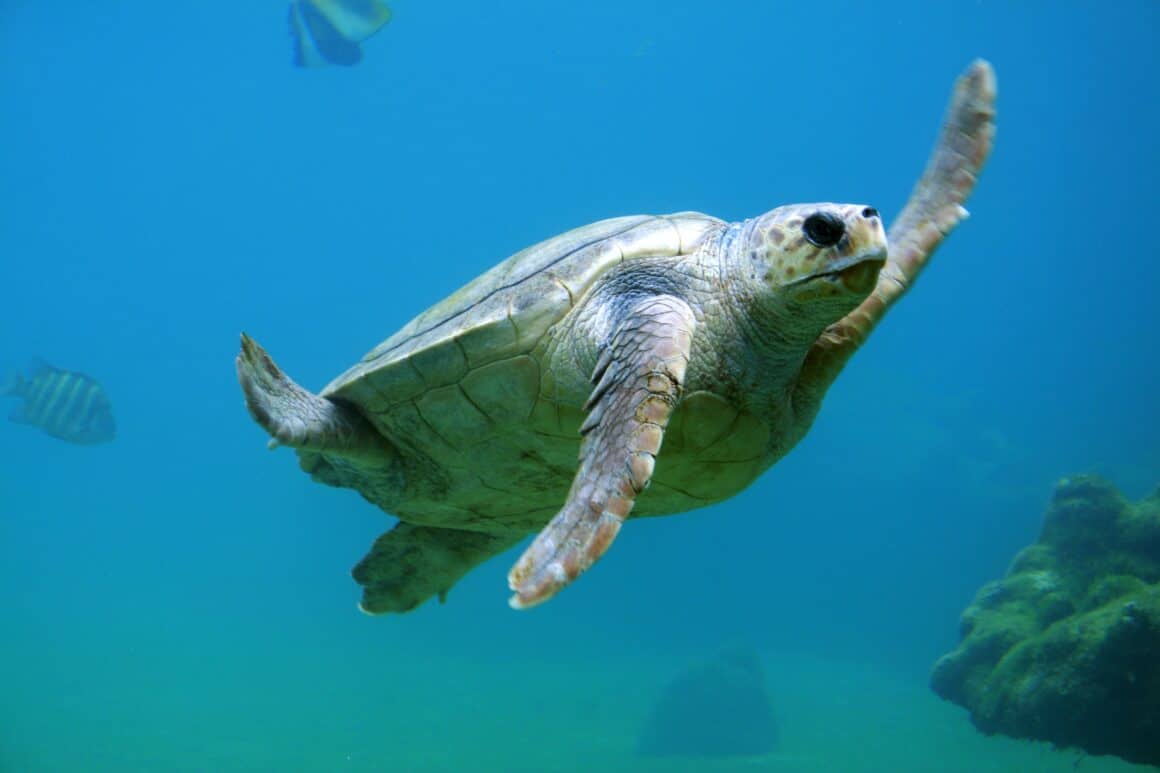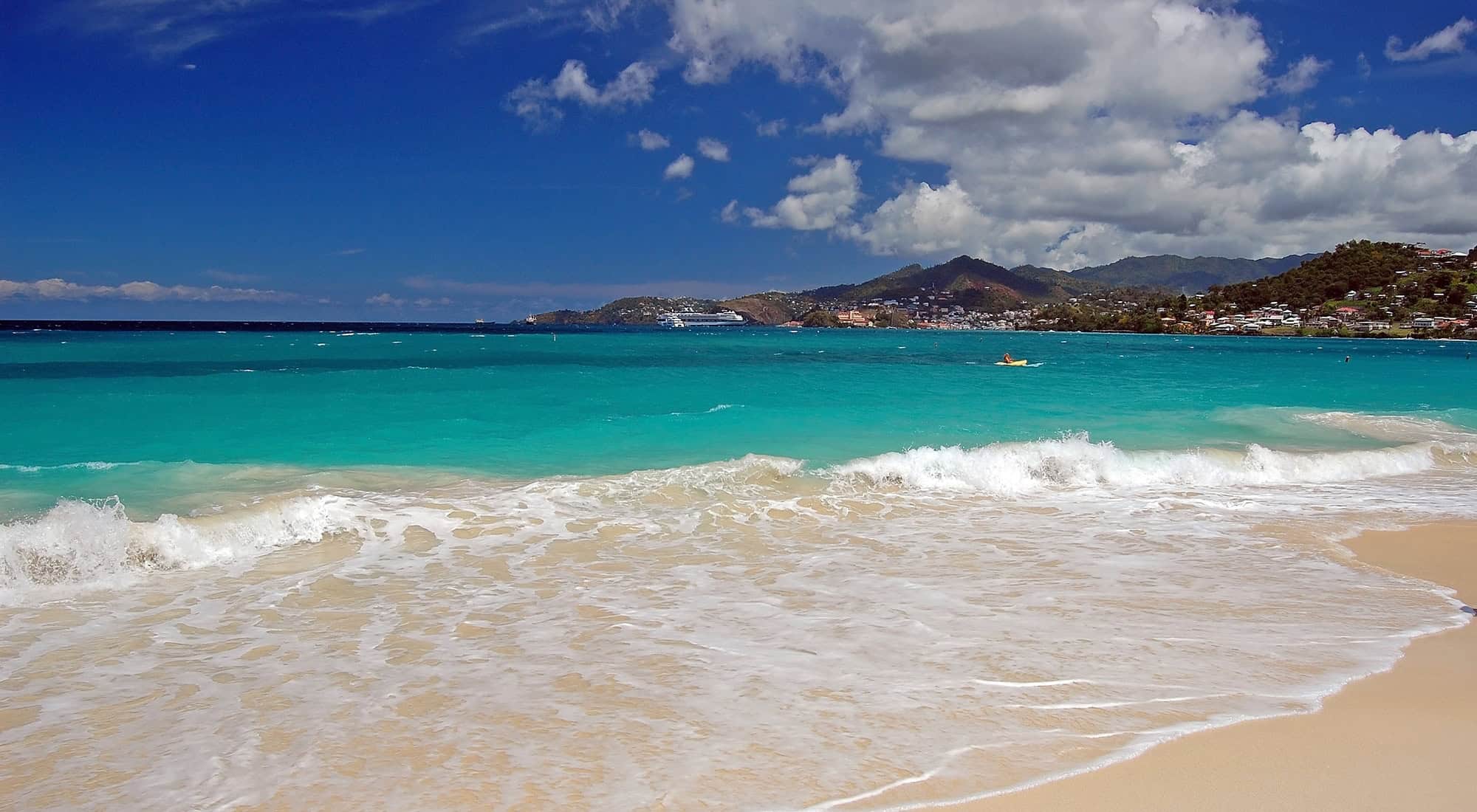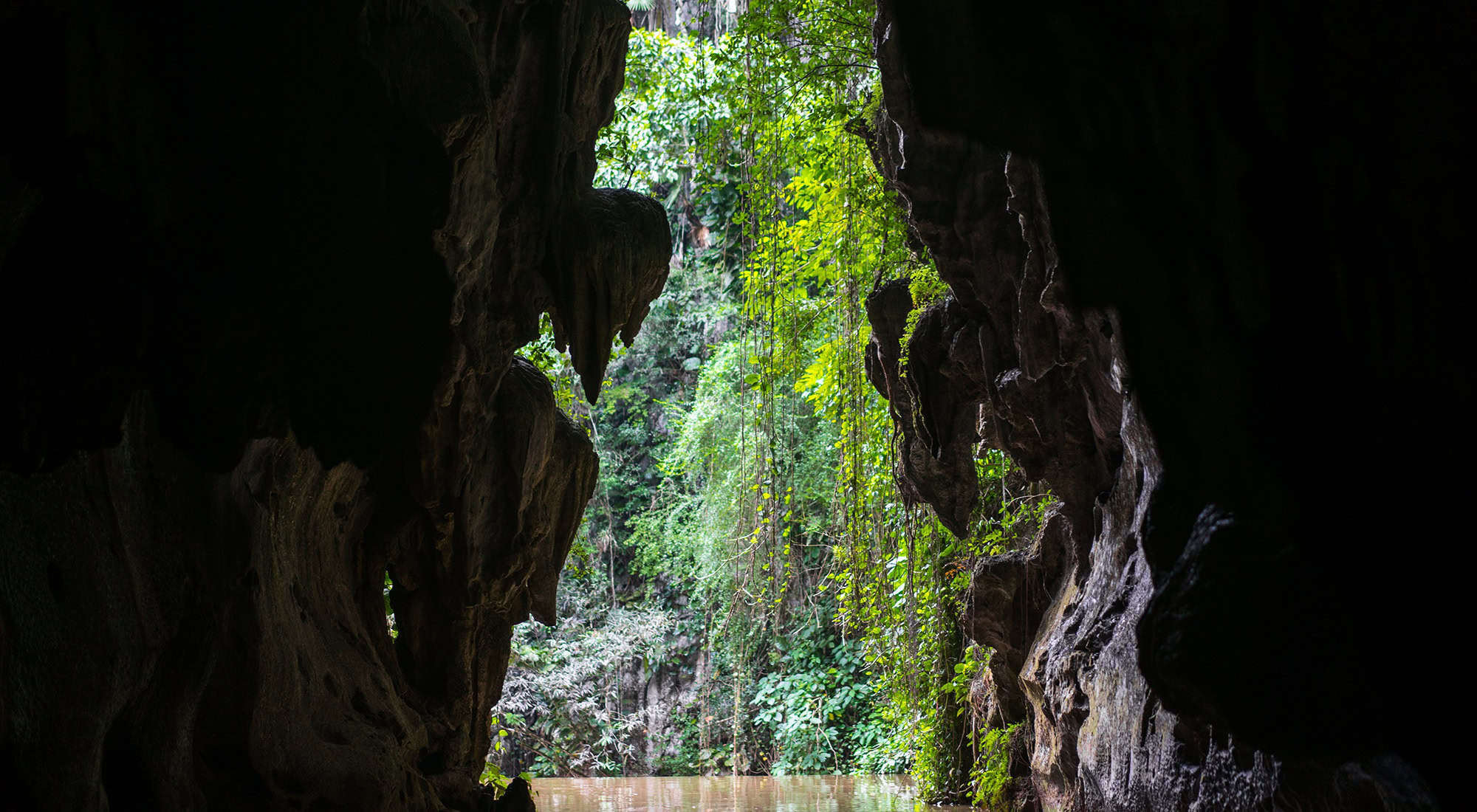Levera Beach attracts Grenada’s largest population of nesting leatherback turtles (Dermochelys coriacea). This turtle gets its name from its unique soft shell, and is the largest of the sea turtle family weighing up to 2000 lbs and expanding up to 6 ft long. Instead of a bony shell (like the green and hawksbill turtle) the carapace of the leatherback is covered by skin and oily flesh, which is an inky-blue colour and somewhat flexible and almost rubbery to the touch – hence the name – and ridges help give it a more hydrodynamic structure. They dive to depths of 4000 ft – far deeper than any other turtle – and can stay down for up to 85 minutes.
Leatherbacks have the widest global distribution of all reptile species, and possibly of any vertebrate. They can be found in the tropic and temperate waters of the Atlantic, Pacific, and Indian Oceans, as well as the Mediterranean Sea, and, given that they can retain body heat to survive in cold water, adults have been seen as far north as Canada and Norway and as far south as New Zealand and the bottom of South America. Leatherbacks undertake the longest migrations between breeding and feeding areas of any sea turtle, averaging 3700 miles each way; a turtle seen in the Caribbean may have come from as far away as Madagascar.
After mating at sea, females come ashore during the breeding season to nest. The night-time ritual involves hauling herself up on to the beach through the surf, excavating a hole in the sand with her back flippers, depositing eggs, re-filling the nest, leaving a large, disturbed area of sand that makes detection by predators difficult, and finally returning to the sea. They visit up to nine times per season, laying 75 to 120 eggs in one ‘clutch’, each time about 10 days apart. Incubation time is 60 days, so about two months later, the eggs hatch, and the baby turtles (‘hatchlings’) dig themselves out of their nests and hustle – awkwardly and adorably – to the open sea. The temperature inside the nest determines the sex of the hatchlings. A mix of male and female hatchlings occurs when the nest temperature is approximately 29˚C, while higher temperatures produce females and cooler temperatures produce males. Female hatchlings that make it to the sea will roam the oceans until they reach sexual maturity. Astonishingly, they then return to the very same beach where they themselves hatched to produce their own offspring. Males spend the rest of their lives at sea.

However, only about one egg in a thousand produces a hatchling that actually survives and makes it back to the sea; the eggs either do not incubate, or the eggs or the hatchlings get taken by crabs, birds or dogs. There are other dangers too and leatherbacks are classed as critically endangered; in 1980 there was an estimated global population of nesting females of around 120,000, but in 2016 figures were put at around 40,000. The population of males is unknown as they never come out of the sea and are rarely seen. Hazards to them are sharks, many get caught up in fishing nets or are struck by boats, and leatherbacks can also die if they ingest floating plastic debris mistaken for their favourite food: jellyfish. Other threats include poachers – turtle meat is known as the ‘beef of the sea’ in some communities – disconcerting man-made light (they only follow the light of the moon), beach erosion and pollution like oils spills.










